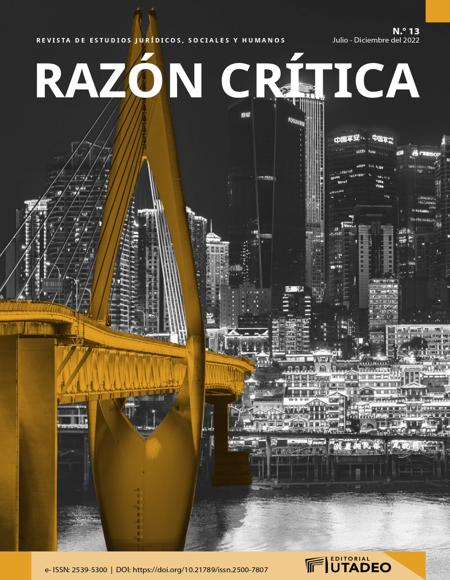
Esta obra está bajo una licencia internacional Creative Commons Atribución-NoComercial-CompartirIgual 4.0.
Esta obra está bajo una licencia internacional Creative Commons Atribución-NoComercial-CompartirIgual 4.0.
Resumen
China ha alcanzado grandes logros en la reducción de pobreza y ha sido ampliamente reconocida por el mundo. Por el contrario, América Latina y Caribe (ALC) está atrapada en la pobreza; así, la cooperación entre ambas partes va a ser muy importante para alcanzar los objetivos de la Agenda del Desarrollo Sostenible de la onu para 2030. Con el fin de evaluar las colaboraciones enfocadas en la reducción de pobreza hechas por ambas partes, y mejorar el proceso con estrategias viables, este artículo se realiza de manera cualitativa a través de una amplia lectura. Asimismo, se divide en tres objetivos principales: describir la pobreza desde una dimensión múltiple de alc, definir las ventajas y desafíos de las cooperaciones desde el nivel macro, meso y micro, y diseñar estrategias de mejora para la colaboración, enfocadas en la reducción de la pobreza de ambas partes en el futuro. Se descubre que, durante los últimos 20[1] años, China y ALC han realizado una gran cantidad de colaboraciones en términos políticos, económicos, infraestructurales, culturales y otros más; además, la promoción del desarrollo económico ha ayudado a reducir la tasa de pobreza. Sin embargo, también dificultan el proceso los desafíos, la falta de mecanismos políticos específicos, la construcción de infraestructura que produce influencias negativas; en ese sentido, el comercio internacional debe ampliar tanto el volumen como el rango de productos, el intercambio cultural debe ampliar su cobertura, etc. Por último, bajo los cinco indicadores de la iniciativa de La Franja y la Ruta, el artículo plantea una serie de estrategias para el futuro.
[1] El presente artículo se estructura como resultado parcial del proyecto aprobado, con el código 2021WYZX05, por Chongqing Federation of Social Science; el proyecto 2021JY077 por Southwest University of China y el proyecto SWU2109230 por Fundamental Research Funds for the Central Universities of China.
Citas
Banco Mundial. (1990). World Development Report 1990: Poverty. Washington D. C.
Baratz, M. S., & Grigsby, W. G. (1971). Thoughts on Poverty and its Elimination. Journal of Social Policy, 1(2), 119-134. https://doi.org/10.1017/S0047279400002348
Booth, C. (1971). Charles Booths´s London. Penguin.
Bustamante, J. (2013). Índice de pobreza multidimensional (IPM) Colombia. Ponencia presentada en el Comité Ejecutivo CEA–CEPAL, Pucón, Chile.
China Economy News. (2019). The Report Shows That Chinese Companies are Becoming More and More Involved in Latin America's Infrastructure. https://baijiahao.baidu.com/s?id=1650698914434700728&wfr=spider&for=pc
China Ministry of Commerce. (2019). The Ministry of Commerce Holds a Regular Press Conference. http://www.mofcom.gov.cn/article/ae/ah/diaocd/201905/20190502866227.shtml.
China News. (2019). Establishment of the First Multilateral Financial Cooperation Mechanism Between China and Latin America. http://www.mofcom.gov.cn/article/ae/ah/diaocd/201905/20190502866227.shtml.
CEPAL. (2020a). El desafío social en tiempos del COVID-19. Informe Especial COVID-19. Santiago.
CEPAL. (2020b). Sectores y empresas frente al COVID-19: emergencia y reactivación. Informe Especial COVID-19. Santiago.
CEPAL. (2021a). Anuario Estadístico de América Latina y el Caribe. CEPAL.
CEPAL. (2021b). Panorama Social de América Latina, 2020. CEPAL.
Dávila, S. B., & Ortega, F. C. (2015). Pobreza multidimensional en Ecuador: aplicación del índice de pobreza multidimensional de Alkire y Foster para ecuador 2008-2014. Foro Economía Ecuador.
Delgado, J., & Laborda, J. (2015). Nicaragua: evolución de la pobreza multidimensional, 2001-2009. MPRA Paper, University Library of Munich, Germany.
Fan, H. S., & Tao, D. Q. (2020). On the Construction of a Community of Shared Destiny between China and Latin America. International observation, 2, 1-26.
George, V. (1988). Wealth, Poverty, and Starvation. Harvester Wheatsheaf.
González, F. A. (2019). Pobreza multidimensional urbana en Argentina: un análisis de las disparidades entre el Norte Grande y Centro-Cuyo-Sur. Cuadernos de Economía, 39(81), 795-822. https://doi.org/10.15446/cuad.econ.v39n81.76486
Guo, C. H. (2019). Sino-ALC Humanities Exchange Mechanism Construction: Development, Challenges and Suggestions. Journal of Southwest University of Science and Technology (Philosophy and Social Sciences Edition), 36(03), 1-6.
Hong, G. Q. (2006). On the Historical Roots of Social Poverty in Latin American Countries. Journal of Jianghan University, 2, 5-10.
Jiang, S. X. (1993). Poverty Issues in Latin America to be Solved Urgently. Liaowang Weekly, 49, 44-45.
Jiang, S. X. (2018). Thoughts on the Path of Constructing a Community of Shared Destiny between China and Latin America. International studies, 2, 30-42.
Li, M., & Wang, Z. Z. (2018). Under the Background of “One Belt One Road”, China and the Five Central Asian Countries Cooperate to Carry out Research on the Path of Anti-poverty. Journal of Humanities, 9, 26-34.
Li, X. H., Zhou, Y., & Chen, Y. (2020). Theories and Methods of Regional Multidiensional Poverty Measurement. Acta Geographica Sinica, 4, 753-768.
Lin, H. (2004). Poverty of Children and Adolescents in Latin America. Journal of Latin American Studies, 4, 37-41.
Miliband, R. (1974). Politics and Poverty. En D. Wedderburn (Ed.), Poverty, Inequality, and Class Structure. Cambridge University Press.
Ministerio Interior de China. (2021). “China's Practice in Human Poverty Reduction” White Paper. Xinhua Press.
OECD. (2020). Family Data Base. http://www.oecd.org/social/family/database.htm.
OIT. (1995). The Framework of ILO Action Against Poverty. The Poverty Agenda and the ILO. International Labour Organization.
People Daily. (2012, 11 de noviembre). The CCP first mentions the “Community of a Shared Future for Mankind”, advocating peaceful development and common development.
Song, X. (2017). On the New Features of Poverty Reduction Strategies in Latin American Countries. Research on Development, 4, 52-57.
Sheng, A. (2004). The Trend of Global Pauperization and the Struggle of Overcoming Poverty in Latin American Countries. Latin American Studies, 4, 37-41.
Spicker, P. (1993). Poverty and Social Security. Routledge.
Spicker, P. (2009). Definiciones de Pobreza: Doce Grupos de Significados. Pobreza: un glosario internacional. Colección CLACSO-CROP, 291-306.
Townsend, P. (1979). Poverty in the United Kingdom. Penguin. https://doi.org/10.1525/9780520325760
Wang, X. L., & Feng, H. (2020). China's Multidimensional Relative Poverty Standards after 2020: International Experience and Policy Orientation. Chinese Rural Economy, 3, 2-21.
Wang, Z. Z., & Hao, L. (2019). Evaluation of the Status Quo and Path Optimization of China-South Asia Cooperation in Anti-poverty Under the Background of “One Belt and One Road”. Qinhai Social Science, 01, 30-37.
Wang, Z. Z., & Zheng, S. (2019). The Realistic Dilemma and Countermeasures of China-Africa Cooperation in Anti-poverty. Journal of Chongqing University (Social Science), 5, 30-34.
Wusun, P. (2016). Poverty and Poverty Alleviation Policies in Latin America from a Multi-dimensional Perspective. Latin American Studies, 03, 15-30.
Xi, J. P. (2015, 17 de octubre). Work Together to Eradicate Poverty and Promote Common Development. People Daily.
Xi, J. P. (2017, 18 de mayo). Xi Jinping held talks with Argentine President Macri, emphasizing that Latin America is a natural extension of the 21st Century Maritime Silk Road. China National Radio.
Xie, W. Z. (2020). China-Latin America Relations in a Major Change Unseen in a Century. People Forum, 2, 109-111.
Xinhua News. (2015, 25 de noviembre). Share the “Chinese Experience of Getting Rid of Poverty”. http://www.xinhuanet.com/politics/2015-11/25/c_128464522.htm.
Yang, Q. (1993). Poverty and Environmental Protection in Latin America. Journal of Latin American Studies, 3, 20-23.
Zheng, B. W. (2009). “Growth Poverty” in Latin America and the Poverty Alleviation Function of Social Security-The Background of International Comparison. Journal of Latin America Studies, 31(S1), 3-29.

 PDF
PDF
 FLIP
FLIP












